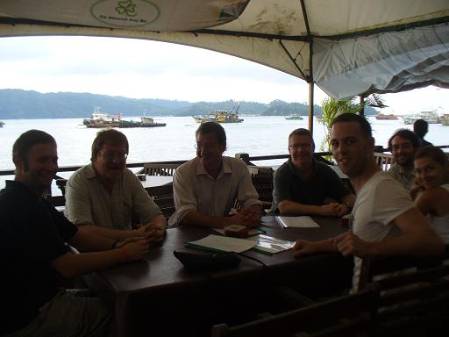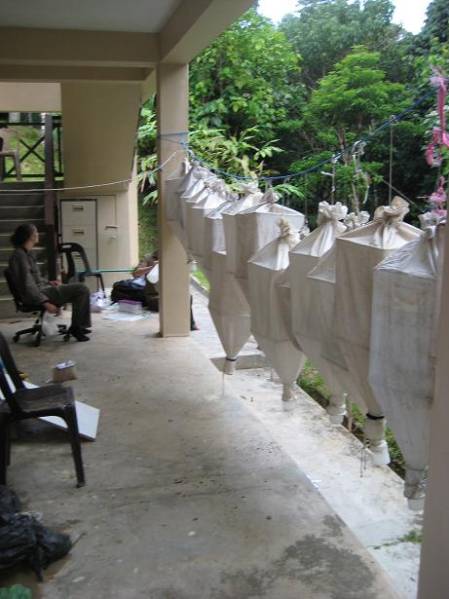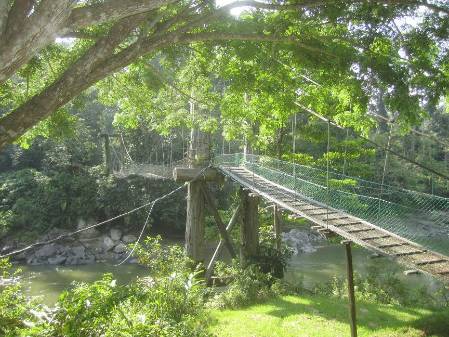 Over the course of late September and October many of the Museum's researchers will be in Borneo to study the flora and fauna on the island. The Museum has a history of leading several successful Borneo-based science projects and this time, we will be documenting the effort in this blog.
Over the course of late September and October many of the Museum's researchers will be in Borneo to study the flora and fauna on the island. The Museum has a history of leading several successful Borneo-based science projects and this time, we will be documenting the effort in this blog.
As the 3rd largest island in the world, Borneo is well-known as a centre of extreme faunistic and floristic diversity, and endemism (i.e. uniqueness to a defined location, such as an island). It is certain that the majority of that diversity and endemism remains to be discovered and documented, in particular the "microfauna", especially in the soils, the forest canopy and freshwater systems. Vast areas of the island are currently being irreversibly altered due mainly to timber extraction and cultivation of oil palm, these two activities often being connected.
A team of 15 biologists from the Museum are traveling to Sabah, Malaysian North Borneo, in September and October this year, to carry out field work in this major biodiversity hotspot. We will be studying and collecting insects, other invertebrates and plant samples using a variety of quantitative and qualitative methods. The qualitative sampling is designed to complement an ongoing 10-year study of soil biodiversity in the New Forest in England, and the Borneo work will provide valuable comparative data on the distribution and abundance of key organisms in tropical and temperate forest systems. In Sabah we will be sampling in the Danum Valley and Maliau Basin, as well as working with the Stability of Altered Forest Ecosystems (SAFE) project which is examining the effects of deforestation, extraction and palm oil (and other) cultivation on biodiversity.
Taxa collected will be a combination of relatively well-known species that can be identified, and less well-known groups that will require a combined morphology/barcoding/molecular probe approach to characterise. The data resulting will support all Museum quantitative inventory projects, in particular the aforementioned New Forest QI project, enabling direct comparison of landscape level biodiversity between tropical and temperate areas.
This trip is multidisciplinary, involving researchers from across the Museum’s Life Sciences departments and local collaborators, particularly from the University of Malaysia Sabah (UMS) in Kota Kinabalu. We are especially concentrating on public engagement, with the Museum’s Nature Live team involved in several live link-up events, including ones to UK schools in the Museum’s Attenborough Studio. In particular, Dan Carpenter’s team will be accompanied by members of Nature Live in October for broadcasts back to the Museum from the field.
We hope you enjoy following our trip to Borneo and you can also keep in touch with the Nature Live coverage (and read about their previous trips to the Bahamas and Costa Rica) in the .
Andy Polaszek and Dan Carpenter
 There are three different teams of scientists from across the Life Sciences department of the Museum who have travelled to work in Sabah on our current trip to Borneo. The first team is collecting parasitic wasps (Hymenoptera) and beetles (Coleoptera). The second is sampling freshwater invertebrates. The third (known as the Quantitative Inventory - i.e. QI - team), of which I am a member, is sampling soil and leaf litter invertebrates and lichens.
There are three different teams of scientists from across the Life Sciences department of the Museum who have travelled to work in Sabah on our current trip to Borneo. The first team is collecting parasitic wasps (Hymenoptera) and beetles (Coleoptera). The second is sampling freshwater invertebrates. The third (known as the Quantitative Inventory - i.e. QI - team), of which I am a member, is sampling soil and leaf litter invertebrates and lichens.






